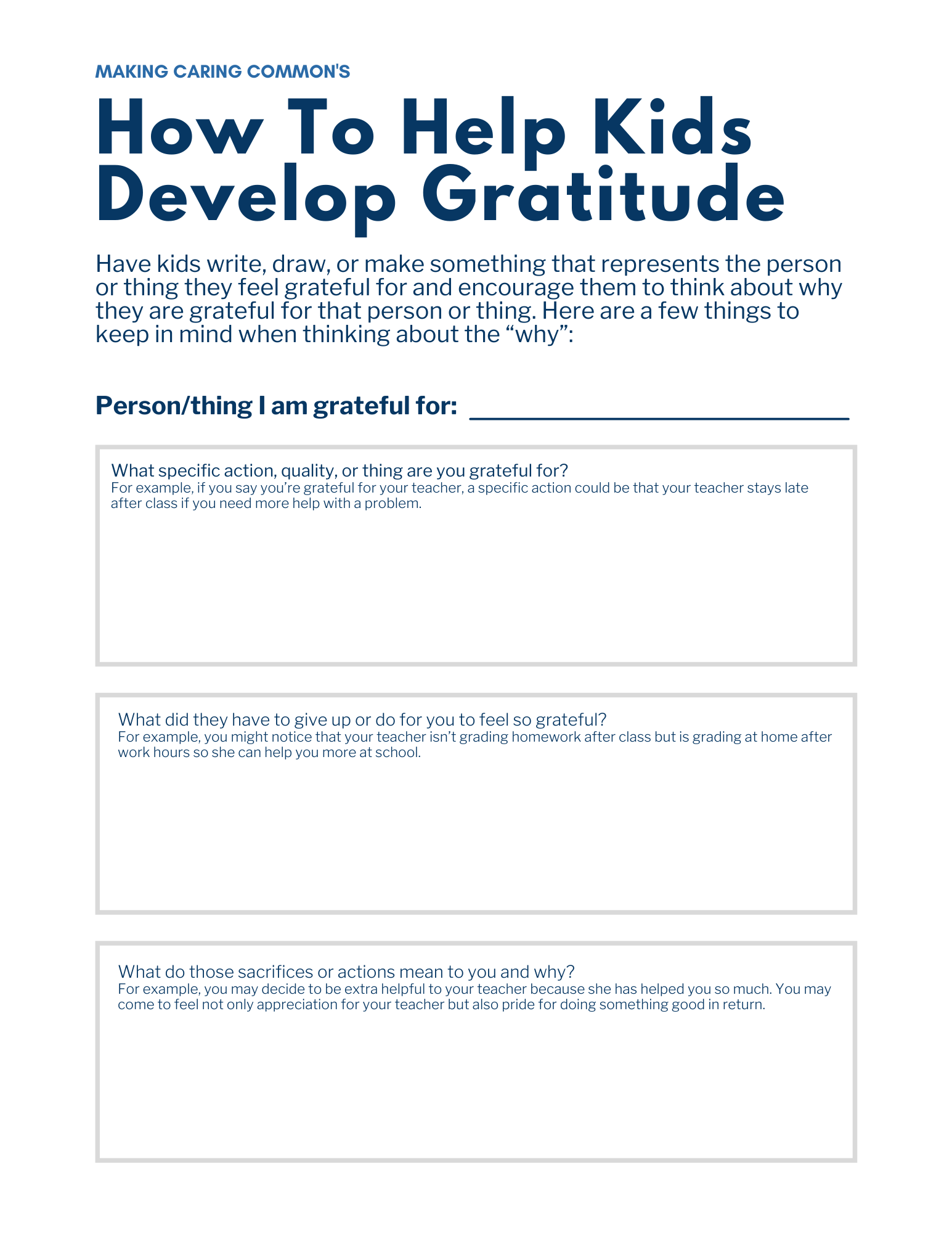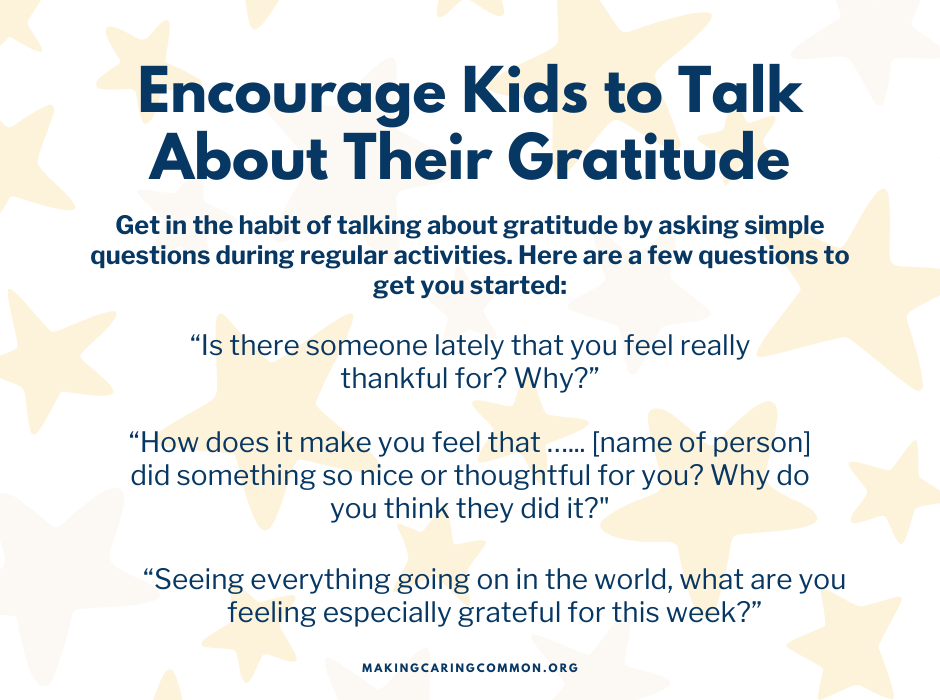How To Help Kids Develop Gratitude
Gratitude is about more than saying ‘thank you’ or saying you feel grateful. It’s about noticing who or what we’re grateful for, thinking about why we’re grateful, and feeling positive about the experience of gratitude. Although it is common for adults to focus on what kids should do to show gratitude (for example, by telling kids to “say thank you”), it is also important to guide kids to experience gratitude through noticing and thinking, and in the process, feeling positive about the experience. To do this, adults can have fun encouraging kids to notice and think about people or things that make them feel grateful on a regular basis. Because some kids can find it difficult to understand why they’re grateful, it’s also important for trusted adults to share or model their own gratitude. Seeing this can help kids understand what it really means to notice and think about the people or things they’re thankful for, and to feel good about their gratitude.
Below are four key steps for adults to help kids learn how to notice and think about the people and things they are thankful for.
1. Practice looking
Encourage kids to practice looking for one person or thing they’re grateful for. You can briefly explain what it means to feel grateful: to appreciate how someone or something makes us feel because of the things they do or make possible for us. Together you can try our Gratitude Search activity (download the PDF), looking for sources of gratitude like “something or someone that makes my life better” or “something that I enjoy doing with other people.”
2. Think about the “why”
Have kids write, draw, or make something that represents the person or thing they feel grateful for and encourage them to think about why they are grateful for that person or thing. They can write or draw in the Gratitude Search activity boxes under each prompt, or use the blank template to create their own.
Here are a few things to keep in mind when thinking about the “why” (kids can also write or doodle their responses to these questions in the printable PDF below):
What specific action, quality, or thing are you grateful for? For example, if you say you’re grateful for your teacher, a specific action could be that your teacher stays late after class if you need more help with a problem.
What did they have to give up or do for you to feel grateful? For example, you might notice that your teacher isn’t grading homework after class but is grading at home after work hours so she can help you more at school.
What do those sacrifices or actions mean to you and why? For example, you may decide to be extra helpful to your teacher because she has helped you so much. You may come to feel not only appreciation for your teacher but also pride for doing something good in return.
3. Share your gratitude
Together, share what you’re thankful for and why. For example, “I feel gratitude for grandpa because he always makes me laugh even when I’m sad” or “I’m grateful for where we live because we get to see trees every day.”
TIP for parents: Take this moment to reflect on and share your own gratitude. Too often, we keep things from kids that might actually make them respect or trust us more. For example, you could share that you tend to take some friends for granted, but because of this activity you’re thinking more about all the things you appreciate about them.
4. Make it a habit
Encourage noticing and thinking about gratitude often. It can be fun to keep up the Gratitude Search by writing down on sticky notes people and things you’re grateful for -- and why -- and papering an entire wall at home! Or, you can take advantage of ordinary moments that allow you to pause, notice, and ask each other simple questions like, “Is there someone lately that you feel really thankful for? Why?”
Questions to ask to encourage kids to think about their gratitude
Overview
For: Parents, Caregivers, and Adults who engage with kids
Ages: 7-10
Resource Type: Activity
Additional Information
The Science Behind These Recommendations
Gratitude is a topic that has been researched extensively. Here are key resources we consulted - in addition to experts and parents - that are behind the recommendations shared on this page:
Emmons, R. A., & McCullough, M. E. (2003). Counting blessings versus burdens: An empirical investigation of gratitude and subjective well-being in daily life. Journal of Personality and Social Psychology, 84, 377–389. [Abstract]
Froh, J. J., & Bono, G. (2015). Making grateful kids: The science of building character. Templeton Press.
Hussong, H. M., Langley, H. A., Rothenberg, W. A., Coffman, J. L., Halberstadt, A. G., Costanzo, P. R., & Mokrova, I. (2018). Raising grateful children one day at a time. Applied Developmental Science, 23(4), 371-384. DOI: 10.1080/10888691.2018.1441713 [Abstract]







